

Video: Reading Art. Use This Flowchart to Help Your Students Write Authentic Artist Statements - The Art of Ed. Magazine / Use This Flowchart to Help Your Students Write Authentic Artist Statements Writing an artist statement can be a daunting task for middle school students.
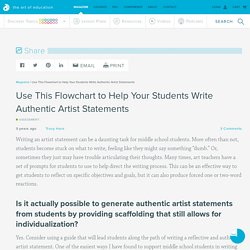
More often than not, students become stuck on what to write, feeling like they might say something “dumb.” Or, sometimes they just may have trouble articulating their thoughts. Many times, art teachers have a set of prompts for students to use to help direct the writing process. Artist Statement Guidelines — Getting Your Sh*t Together. Artists can send their artist statement for professional review.
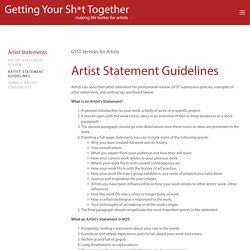
GYST submission policies, examples of artist statements, and writing tips are found below: What Is an Artist’s Statement? What an Artist’s Statement is NOT: Pomposity, writing a statement about your role in the world.Grandiose and empty expressions and clichés about your work and views.Technical and full of jargon.Long dissertations or explanations.Discourses on the materials and techniques you have employed.Poems or prosy writing.Folksy anecdotes about some important event in your life.Nothing about your childhood or family unless it is very relevant to your work.Not a brag fest or a press release. The Helpful Art Teacher: Draw a Surrealistic Room in One Point Perspective. The first video shows the easiest quick method for drawing a room in one point perspective using only a ruler and a square piece of paper: The trick to accurately drawing a room in one point perspective is making sure that the back wall is in correct proportion to the size of the paper.
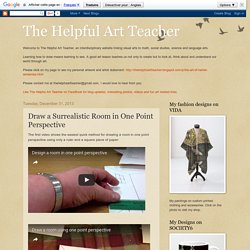
If you try to draw a room and just draw a floor and walls without taking proportion into account you will find that the ceiling does not match up at all. Art Lessons: Artist in Residence Watercolor Lessons. Norval Morrisseau - Footprints. Norval Morrisseau: Copper Thunderbird worked to instill pride in his people Deceased: Dec. 4, 2007 By Cheryl Petten Norval Morrisseau has been known by many names.
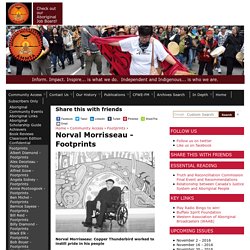
Some have called him the father or grandfather of Native Canadian art. Others dubbed him the Picasso of the North. Morrisseau was born on March 14, 1932 in Fort William, now part of Thunder Bay, Ont. Morrisseau’s time of learning from his grandparents was cut short when he was sent away to a Catholic boarding school, where he endured abuse-physical, sexual and emotional. Although he was no longer attending school, Morrisseau was eager to continue his learning, but now his teachers would be his grandfather and the other Elders in the community. Reading. Slow Looking and 5 Other Simple Activities to Enhance Your Students’ Ability to Analyze Art - The Art of Ed. Magazine / Slow Looking and 5 Other Simple Activities to Enhance Your Students’ Ability to Analyze Art With everything you have to fit into your curriculum, do you ever feel like some things just fall by the wayside?
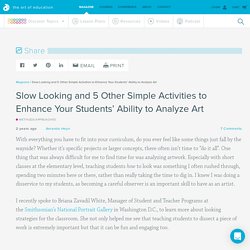
Whether it’s specific projects or larger concepts, there often isn’t time to “do it all”. One thing that was always difficult for me to find time for was analyzing artwork. Especially with short classes at the elementary level, teaching students how to look was something I often rushed through, spending two minutes here or there, rather than really taking the time to dig in. Looking@art.
Gestalt Principles. Gestalt Principles Gestalt is also known as the "Law of Simplicity" or the "Law of Pragnanz" (the entire figure or configuration), which states that every stimulus is perceived in its most simple form.
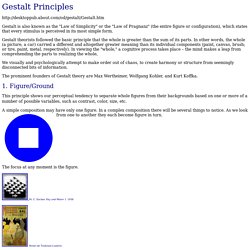
Gestalt theorists followed the basic principle that the whole is greater than the sum of its parts. In other words, the whole (a picture, a car) carried a different and altogether greater meaning than its individual components (paint, canvas, brush; or tire, paint, metal, respectively). In viewing the "whole," a cognitive process takes place – the mind makes a leap from comprehending the parts to realizing the whole, Art, Residential Schools & Reconciliation: Key Questions. Adrian Stimson’s Sick and Tired, part of “Witnesses” at the Belkin Art Gallery, includes windows and an infirmary bed from the Old Sun Residential School in Gleichen, Alberta.
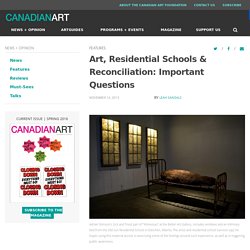
The artist and residential school survivor says he hopes using this material assists in exorcising some of the feelings around such experience, as well as in triggering public awareness. This year, there has been an unprecedented number of exhibitions, residencies and other art activities aimed at addressing Canada’s residential-school history and present-day consequences, as well as addressing the Truth and Reconciliation Commission (TRC) that has been officially ordained to bring that legacy to light. Tomorrow, leading Aboriginal and non-Aboriginal artists, curators and critics will discuss the meaning and ethics of this growing cultural activity at Traumatic Histories, Artistic Practice and Working from the Margins, a Vancouver symposium that is being livestreamed free across the country starting at 9 a.m.
UR Courses: Log in to the site. What Is Wabi-Sabi? The Japanese view of life embraced a simple aesthetic that grew stronger as inessentials were eliminatedand trimmed away.

-architect Tadao Ando Pared down to its barest essence, wabi-sabi is the Japanese art of finding beauty in imperfection and profundity in nature, of accepting the natural cycle of growth, decay, and death. It's simple, slow, and uncluttered-and it reveres authenticity above all. UR Courses: Log in to the site. Culture Weekly - What is art education’s answer to the refugee... 7 art initiatives that are transforming the lives of refugees. Students Respond to the Refugee Crisis Through Art. Images help us think.
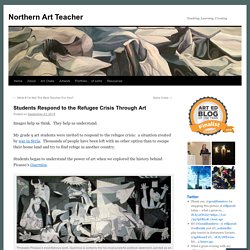
They help us understand. My grade 9 art students were invited to respond to the refugee crisis: a situation created by war in Syria. Thousands of people have been left with no other option than to escape their home land and try to find refuge in another country. Students began to understand the power of art when we explored the history behind Picasso’s Guernica. “Probably Picasso’s most famous work, Guernica is certainly the his most powerful political statement, painted as an immediate reaction to the Nazi’s devastating casual bombing practice on the Basque town of Guernica during Spanish Civil War.”
We began to develop an appreciation for art that may not appeal to us, but that carries a message much more powerful than any realism could portray. Next, we discussed a famous photograph from the Vietnam War. Images can affect change by raising awareness and by sharing a common concern. Woodland Art Project for Kids. This Woodland Art Project for Kids is a great way to get creative (and a little messy) with kids at home or in the classroom.

Follow this step-by-step lesson that will walk you through using charcoal and masking tape to create an easy but eye-catching scene. Supplies for Woodland Art Project: white card stock or textured drawing papervine charcoalmasking tape (we used 3/4″ wide masking tape)sticky labels or nametagsnewspaper or something to protect table or deskspaper towels, dryeraser or kneaded eraserorange soft pastel, oil pastel, or colored pencil.